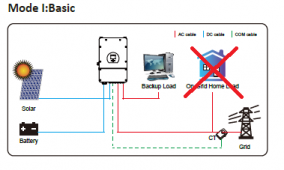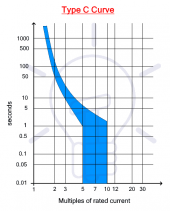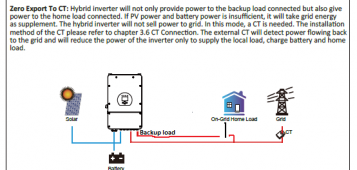Hello,
I am confused by the AC section of the Deye spec sheet and manual. My case use is the "basic" mode from the manual minus "on-grid home" since there is no net metering here. Therefore I want my whole house to be the "backup load". 8kW continuous and 16kW peak is comfortable for my needs. I am in the Philippines and the grid here is 230V single phase. If I interpret correctly, the manual states that I am supposed to install a 63A breaker between the grid and the inverter, and a 63A breaker between the inverter and the backup load. At 230V AC these breakers would trip at 14,490V. But the manual states that the max "peak power" is 16,000W (2x rated power) for 10 seconds. But the breakers will trip before that peak power is even reached. So what gives?



I am confused by the AC section of the Deye spec sheet and manual. My case use is the "basic" mode from the manual minus "on-grid home" since there is no net metering here. Therefore I want my whole house to be the "backup load". 8kW continuous and 16kW peak is comfortable for my needs. I am in the Philippines and the grid here is 230V single phase. If I interpret correctly, the manual states that I am supposed to install a 63A breaker between the grid and the inverter, and a 63A breaker between the inverter and the backup load. At 230V AC these breakers would trip at 14,490V. But the manual states that the max "peak power" is 16,000W (2x rated power) for 10 seconds. But the breakers will trip before that peak power is even reached. So what gives?










